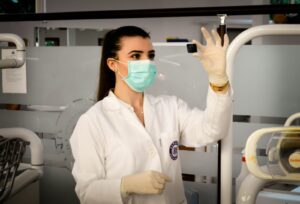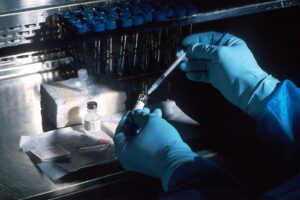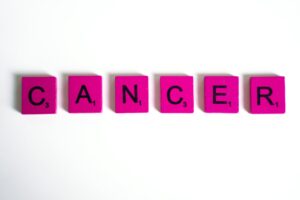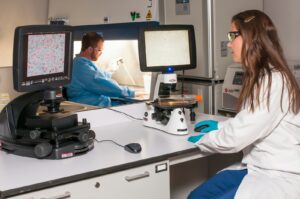![]()
15% of cases of breast cancer are triple-negative, a difficult-to-treat type. Chemotherapy medications that boost the immune system and others that force tumour cells to implode are showing promise as treatments.
The most frequent form of cancer in women, breast cancer accounts for almost 92000 annual fatalities in Europe alone. Although this figure is unquestionably large, survival rates are rising. A patient now has a 90% probability of surviving thanks to improvements in prevention, identification, and treatment.
The triple-negative breast cancer (TNBC), so termed because it lacks three different cell proteins, is one aggressive type that defies the trend. About 15% of breast cancer cases involve these tumours, and their prognosis is significantly poorer than that of other types.
Tumors spread more frequently before they are identified, develop more quickly, and are more likely to recur the following therapy. Additionally, early death is likely when TNBC recurs in other organs, with survival rates as low as 11%.
TNBC is currently not subject to any particular therapies. In most cases, the tumour is surgically removed before a combination of chemotherapy medications known to be effective against other cancers is administered. But frequently, the outcomes are sporadic and transient.
Dr. Andreia Valente, the coordinator of an EU-funded study to investigate treatments for TNBC, noted that after a while, the body frequently develops defenses against this cocktail and it ceases to operate. When this occurs, the tumour typically develops multidrug resistance, which means it doesn’t react to any other kind of treatment.
CanceRusolution is a one-year Women TechEU programme that will run until the end of May 2023 and is coordinated by Dr. Valente, a researcher at the University of Lisbon in Portugal, and her research colleague, Dr. Helena Garcia.
Unique Metal
Ruthenium is a rare, silvery-white metal that is being researched since it is known to be well-tolerated by humans. Early tests suggest that the ruthenium-based medication the research team has created both slows the growth of TNBC cells and prevents their spread.
The second set of experiments, which will be conducted on animals, will soon begin. In addition to this, the researchers will assess the safety profile of the medicine to make sure it is toxic to cancer cells but safe for the rest of the body.
Chemotherapy is infamous for its terrible side effects, which can range from nausea and lack of appetite to weariness and hair loss. This is because the chemicals used to treat cancer usually also destroy healthy cells in addition to the fast-growing tumour cells.
Because healthy cells appear to be unharmed, early CanceRusolution data indicate a medicine based on ruthenium would likely have fewer negative effects on patients.
According to Dr. Garcia, the drug’s toxicity profile appears to be favorable so far. According to our research, the substance has a high concentration in the tumour 24 hours after administration, but it is virtually completely gone from the blood and urine around the tumour. This suggests that our medication’s side effects should be minimal.
Receptors are proteins that are expressed on the surface of healthy breast cells. They enable it to respond to hormones and other essential molecules that regulate how the cell grows, divides, and heals itself, such as those that cause it to enlarge during pregnancy.
Additionally, most cancer cells have receptors. A doctor will examine a sample of sick breast tissue to determine which receptors, referred to in this context as biomarkers are expressed in order to establish an appropriate diagnosis.
Breast tumours frequently contain three biomarkers, and medications have been created to target each one.
However, TNBC is an anomaly. It doesn’t have any of these biomarkers, thus there isn’t a clear approach to stop the growth of the tumour.
By being delivered as a nanoparticle that enters the tumour through flaws in the tumor’s blood-supply system, the medication created by the Portuguese team circumvents this issue. Once inside, it bursts open like a Trojan horse to discharge the substance.
This specifically targets the cytoskeleton, a complex web of interconnecting protein filaments that lines the core of TNBC cells and serves as a scaffolding.
The medication “then kills the cell’s very foundation,” according to Dr. Garcia. “The cell has no chance of surviving if the cytoskeleton is not functioning. It spills.”
With further funding, the researchers think their medication might be prepared for human testing in two years.
It is oversimplified to think of TNBC as a single form of breast cancer. In actuality, this category of tumours is very diverse.
However, there is no subtype classification used by researchers. Having one would enable them to focus on brand-new biomarkers, which is thought to open the door for new, specialized treatments.
Another EU-funded initiative called P70-IMMUNEBREAST is built on the principles of classifying patients according to the specific characteristics of their tumours and looking for new therapy options for TNBC.
The project’s researchers developed a classification system based on how much a tumour expresses “kinase,” an enzyme and another cancer biomarker, after examining 350 samples of malignant tissue.
Previous studies have demonstrated that the kinase P70S6K is present in significant concentrations in TNBC tumours.
According to researcher Dr. Rebeca Jimeno, “What we’re interested in is the relationship between this kinase and the body’s immune response.” When everything is in order, when tumours form in our bodies, our immune system detects them and eliminates them.
Why this mechanism occasionally fails is a crucial question.
Immunity slant
Dr. Jimeno, who is based at the Spanish National Cancer Research Center, has shown that fewer B cells are present in a tumour when P70S6K kinase is produced at high levels.
Cancer cells are recognized by B cells, who then invade and kill them. In other words, P70S6K enables cancer to remain unnoticed by the immune system while continuing to spread.
Finding a suitable inhibitor for this kinase is one of the upcoming research steps.
Finding a suitable inhibitor for this kinase is one of the upcoming research steps.
Dr. Jimeno remarked, “Drugs are being tested, but I think it will be years before one is developed that is well-tolerated by the body.”
She believes that ultimately a treatment will be discovered.
We’re working extremely hard to fill this unmet need, and I’m convinced that, one research study at a time, we’ll succeed, said Dr. Jimeno.
The Marie Skodowska-Curie Actions of the EU provided funding for the research for this publication (MSCA). Please think about sharing this post on social media if you enjoyed it.








